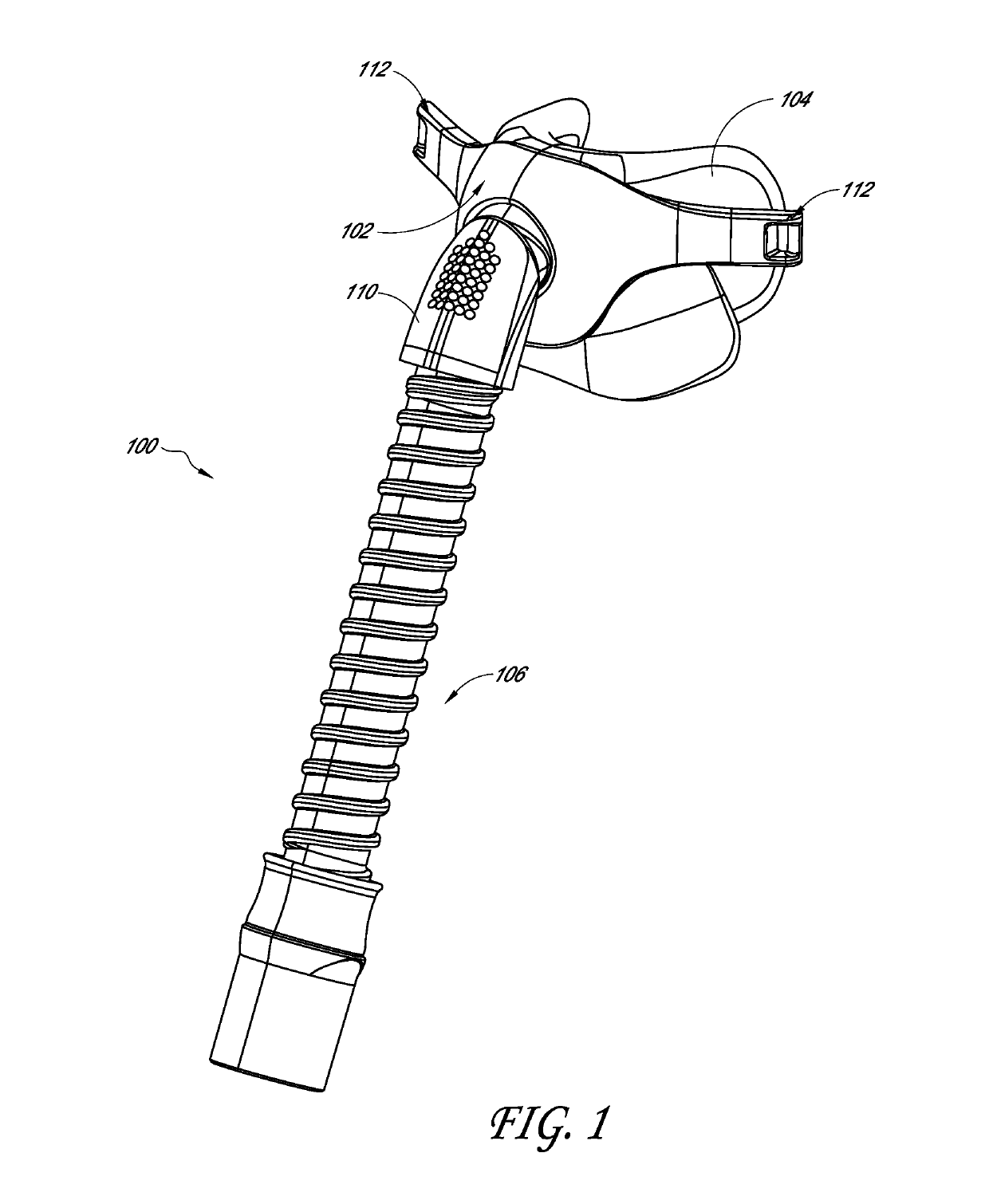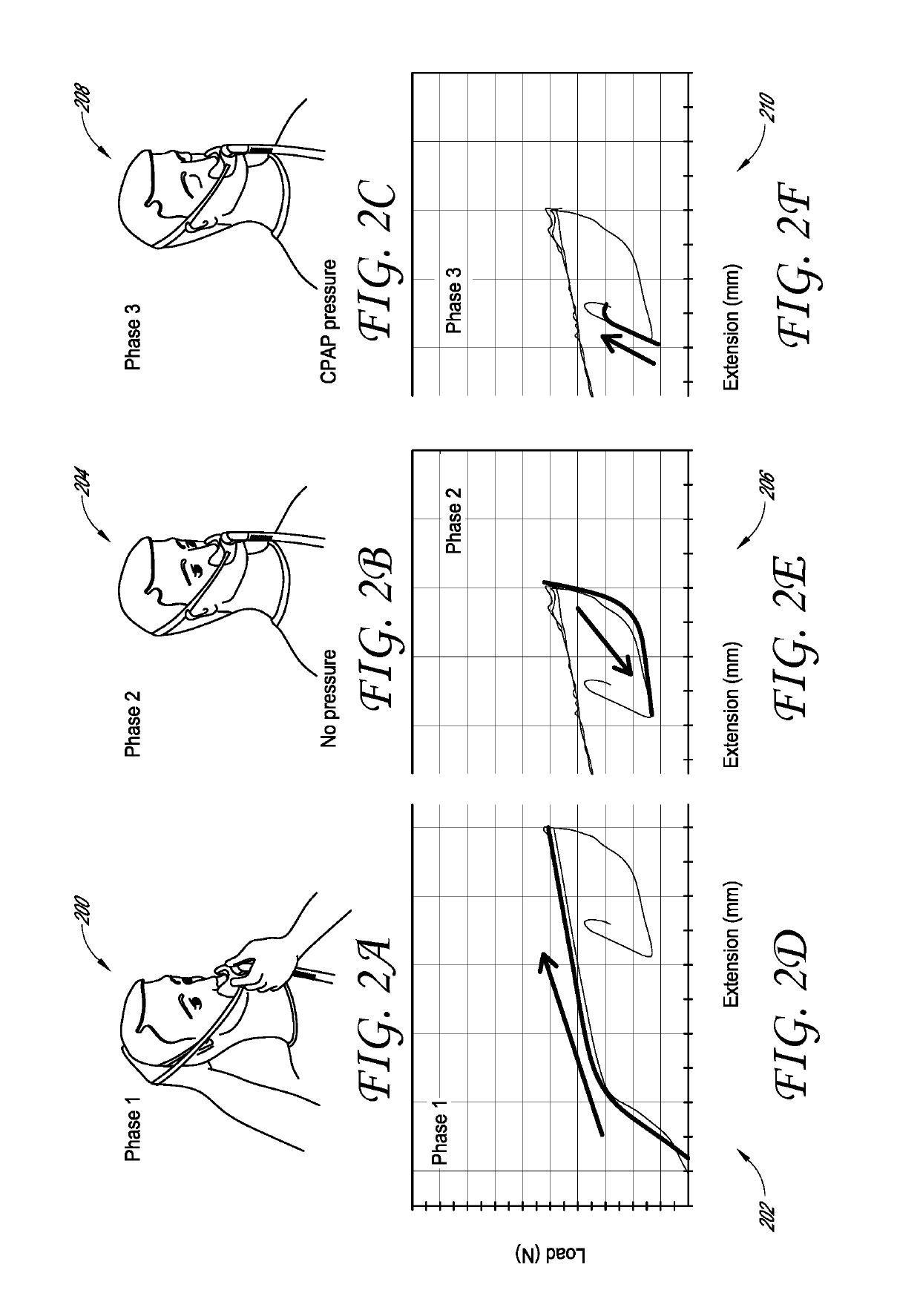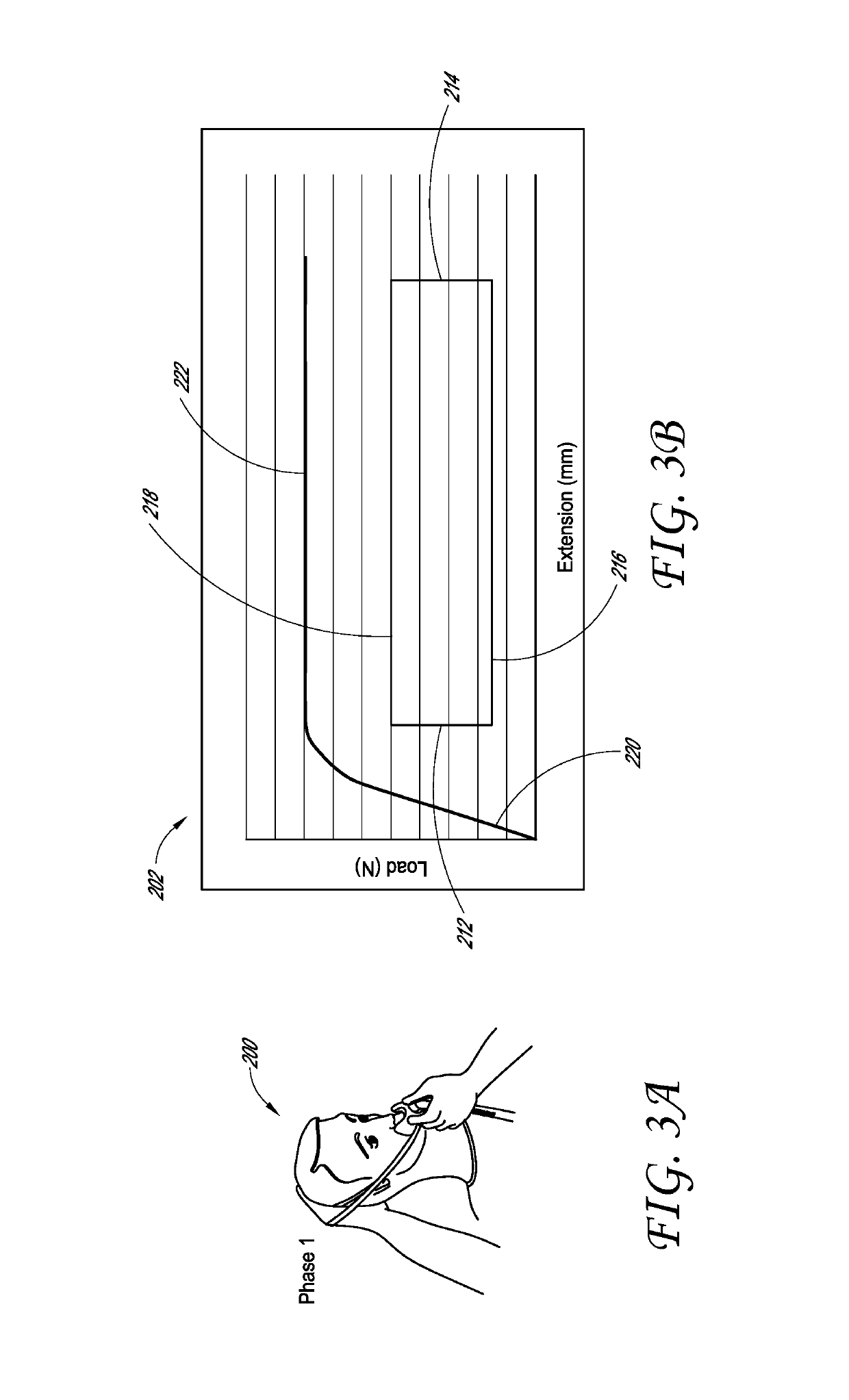Automatically adjusting headgear for patient interface
a patient interface and automatic adjustment technology, applied in the field of automatic adjustment structures, can solve the problems of tight fitting, application of significant force on the face of the user with the largest possible head circumference and the lowest possible cpap pressure, and multiple iteration adjustments for users
- Summary
- Abstract
- Description
- Claims
- Application Information
AI Technical Summary
Benefits of technology
Problems solved by technology
Method used
Image
Examples
embodiment 304
[0169]FIGS. 7A-B illustrate one embodiment of headgear that has the resistance on demand profile shown in FIG. 6. The illustrated configuration comprises a layered stretch assembly 304. In the layered stretch embodiment 304 shown in FIG. 7A, two straps 306 and 308 can be layered, one on top of the other, each with alternating stretch 310, 316, 320 and non-stretch 312, 314, 318 sections. As shown, the two straps 306 and 308 may be folded over one another, as indicated by the arrow 324 such that the non-stretch section of one strap overlaps with at least the stretch section of the other strap. As shown, the non-stretch segment 314 of the strap 306 overlaps the stretch segment 316 of the strap 308. The non-stretch segment 314 is preferably longer than the stretch segment 316 such that at least a portion of the non-stretch segment 314 overlaps with at least a portion of the non-stretch segment 312 to create a continuous non-stretch path. Similar overlap of the non-stretch segment 312 wi...
third embodiment
[0171]FIG. 9 illustrates a layered strap configuration. In this configuration, the layered strap 500 comprises alternating stretch and non-stretch segments, as in the embodiments discussed above. In the configuration illustrated in FIG. 9, a segment of the strap folds over. When folded over, gripping portions of the non-stretch segments can be aligned, which reduces or eliminates the likelihood of further elongation of the headgear. In some configurations, the strap segment is folded over once the headgear has been stretched to fit over the user's head and after the user has achieved a desired tension in the interface assembly. In some configurations, the strap segment is folded over prior to initiation of pressure-based treatments.
[0172]An additional layered strap configuration is shown in FIG. 10. In this configuration, the layered strap 600 has a stretch segment 614 layered over a non-stretch segment 610. The stretch segment 614 connects two non-stretch segments 612 (one shown) t...
second embodiment
[0184]a high resistance to start movement configuration is shown in FIGS. 16A and 16B. In this embodiment, self-regulating washer friction holds the core strap to reduce or eliminate the likelihood of further elongation until the friction is overcome and the core strap is released to elongate or retract with a low load force. FIGS. 16A and 16B include a self-regulating washer mechanism 1100 that provides a balanced fit as that concept is discussed above. The self-regulating washer mechanism 1100 includes an S-shaped friction member 1104 having a bendable curve 1110 and a self-regulating washer 1106 adjacent to the bendable curve 1110 portion of the S-shaped member 1104. The friction member 1104 and the curve 1110 can be positioned within a housing 1111 and a stretch component 1113 can be secured to the housing 1111, for example but without limitation. A core strap 1108 of the headgear passes through an orifice in the S-shaped member 1104 and also through the washer 1106. The core st...
PUM
 Login to View More
Login to View More Abstract
Description
Claims
Application Information
 Login to View More
Login to View More - R&D
- Intellectual Property
- Life Sciences
- Materials
- Tech Scout
- Unparalleled Data Quality
- Higher Quality Content
- 60% Fewer Hallucinations
Browse by: Latest US Patents, China's latest patents, Technical Efficacy Thesaurus, Application Domain, Technology Topic, Popular Technical Reports.
© 2025 PatSnap. All rights reserved.Legal|Privacy policy|Modern Slavery Act Transparency Statement|Sitemap|About US| Contact US: help@patsnap.com



